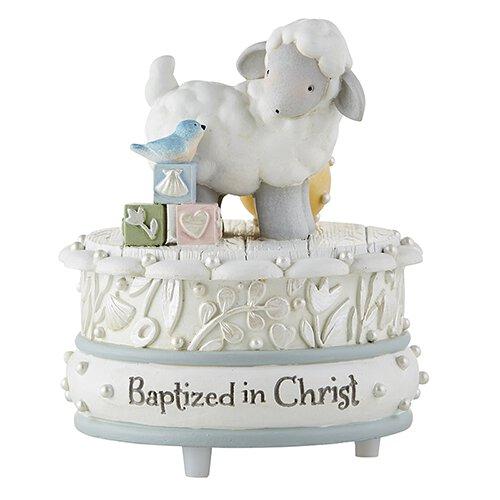Divine Mercy Sunday
Divine Mercy
As Catholics we often hear the term Divine Mercy, but how frequently do we more fully understand what it is? We may think it is simply the “Jesus I trust in you” quote, a painting in the hallway of our relative’s house or an alternate option to praying the rosary. While these are somewhat correct, a surface level understanding of Divine Mercy does a great disservice to our spiritual wellbeing and connection with our Lord.
What is “Divine Mercy”?
While we know that God is love (1 John 4:8), our knowledge of God’s mercy is often clouded by the overwhelming grief and guilt brought on us by our sin and our brokenness. Divine Mercy, at its core, is a reminder that God’s forgiveness, love, and compassion are greater than the weight of our transgressions. The powerful message of Divine Mercy and its accompanying devotions have been made known to the world through Jesus' direct revelation to St. Faustina Kowalska.
Saint Faustina Kowalska was a Polish nun who lived in the beginning of the 20th century. At the age of 19 she made her journey across Poland to become a nun after receiving the first of her many visions of Jesus. Throughout her life in the convent, she wrote a diary of over 600 pages, primarily dedicated to the messages she received from Our Lord regarding His love for sinners and His abundant Mercy. The title “Apostle (or Secretary) of Divine Mercy” is often given to St. Faustina as her writings give the world access to know that Jesus is perpetually desiring to give His mercy to those who flock to Him with contrite hearts.
The Divine Mercy Image
On Sunday, the 22nd of February 1931, Jesus appeared to St. Faustina in a white garment with two rays shining from His heart, one red and one translucent white. As she recalled in her diary Jesus told her, ‘Paint an image according to the pattern you see, with the signature: "Jesus, I trust in You". I desire that this image be venerated, first in your chapel, and then throughout the world. I promise that the soul that will venerate this image will not perish.”
Three years after her vision, the first Divine Mercy image was created in Poland under her direction, depicting the apparition of Jesus. This is the image we commonly see replicated on prayer cards, icons and even in church sanctuaries today.
To better understand the image, St. Faustina asked Jesus to elaborate, and heard this in response;
“The two rays denote Blood and Water. The pale ray stands for the Water which makes souls righteous. The red ray stands for the Blood which is the life of souls. These two rays issued forth from the depths of My tender mercy when My agonized Heart was opened by a lance on the Cross. Happy is the one who will dwell in their shelter, for the just hand of God shall not lay hold of him (299, St. Faustina’s diary). By means of this image I shall grant many graces to souls. It is to be a reminder of the demands of My mercy, because even the strongest faith is of no avail without works (742).”
Divine Mercy Sunday
St. Faustina recounted fourteen visions of Jesus desiring a feast day to be established for His Divine Mercy. She recalled in her diary Jesus asking for the image to be “solemnly blessed on the first Sunday after Easter Sunday; that Sunday is to be the Feast of Mercy.” During the canonization of St. Faustina the year 2000, Pope John Paul II added the title of Divine Mercy Sunday to the Solemnity of the Octave of Easter. On these days we often find the Divine Mercy image given to St. Faustina venerated in homes and in church sanctuaries. There is also a plenary indulgence made available to those going to confession and receiving the Eucharist on Divine Mercy Sunday.
The Divine Mercy Chaplet
St. Faustina also received by way of vision the chaplet of Divine Mercy. This special devotion is a set of prayers that utilize rosary beads but meditate on the message of Divine Mercy through the passion of Christ. According to St. Faustina herself, the purpose of the Divine Mercy Chaplet is to “to obtain mercy, to trust in Christ's mercy, and to show mercy to others”. At a third of the length of a rosary, the Divine Mercy chaplet is a short but extremely powerful way to connect to the mercy of Christ, with three promises attached to it by St. Faustina from Jesus.
According to St. Faustina, by the Chaplet of The Divine Mercy, “Christ will embrace the souls with His Divine Mercy during their lifetime and especially at the hour of their death (n. 754)”. The Chaplet “pleases Christ to grant everything the soul asks (n. 1541)” and “when hardened sinners say it, Christ will fill their souls with peace, and the hour of their death will be a happy one (n. 1541)”.
Divine Mercy
With a better understanding of the Divine Mercy devotions, we can more readily flee to the loving mercy of Christ and to remain within the shelter of the most precious blood and water that flowed from the side of Jesus. Say the Divine Mercy chaplet, venerate the Divine Mercy Image, go to confession, and receive Jesus on Divine Mercy Sunday and never forget that the compassionate forgiveness of Our Lord will never be denied to anyone who seeks it.







Leave a comment